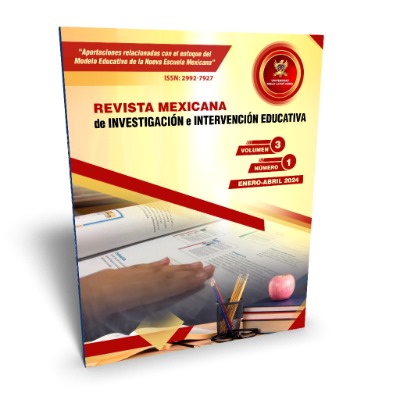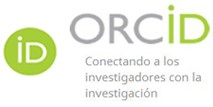Educational experience: preserving the Hñähñu language from the family nucleus with indigenous preschool students from the Mezquital Valley
DOI:
https://doi.org/10.62697/rmiie.v3i1.70Keywords:
Intervención docente, nido de lengua, lengua HñähñuAbstract
El documento describe una experiencia educativa a partir de la práctica profesional realizada durante el último ciclo de formación inicial como docente de educación preescolar indígena, la cual parte de una situación problemática: realizar una intervención docente que requiere del dominio de estrategias pertinentes para la enseñanza de la lengua Hñähñu y para su preservación en ese nivel educativo y en la modalidad multigrado, en un contexto donde los alumnos no comprenden ni usan la lengua Hñähñu de manera cotidiana en el ámbito escolar y familiar. Se describe la experiencia y sus aportes a la mejora del trabajo docente, a partir del análisis de las actividades realizadas como parte de dos proyectos didácticos y la elaboración de una guía con orientaciones para las familias que tuvo la intención de preservar la lengua Hñähñu en el núcleo familiar desde un enfoque de inmersión con nido de lengua. Los resultados más sobresalientes de la experiencia se describen en torno a la mejora de la práctica docente al emplear estrategias pertinentes para la enseñanza de la lengua originaria en educación preescolar que incorporaran elementos de problematización, reflexión sobre las identidad cultural y lingüística e inmersión mediante nidos de lengua en los hogares de los alumnos.
Palabras clave:
Intervención docente, nido de lengua, lengua Hñähñu.
ABSTRACT
The document describes an educational experience based on the professional practice carried out during the last cycle of initial training as a teacher of indigenous preschool education, which is based on a problematic situation: carrying out a teaching intervention that requires mastery of relevant strategies for teaching the Hñähñu language and for its preservation at that educational level and in the multigrade modality, in a context where students do not understand or use the Hñähñu language on a daily basis in the school and family environment. The experience and its contributions to the improvement of teaching work are described, based on the analysis of the activities carried out as part of two teaching projects and the development of a guide with guidelines for families who intended to preserve the Hñähñu language in the family nucleus from an immersion approach with a nest of language. The most outstanding results of the experience are described around the improvement of teaching practice by employing relevant strategies for teaching the native language in preschool education that incorporated elements of problematization, reflection on cultural and linguistic identity and immersion through nests of language in the students' homes.
Keywords:
Teaching intervention, language nest, Hñähñu language.
Downloads
References
Baronnet, B. (2013). Lenguas y participación comunitaria en la educación indígena en México. Revista de Antropología Iberoamericana, 8(2), 183-208.
Chávez Epiquén, A., Chenet Zuta, M., & Quispe Cutipa, W. (2019). Estrategias didácticas para la revitalización de lenguas originarias en estudiantes de la Universidad Nacional Intercultural de la Amazonía. Revista San Gregorio, 1(33).
Latorre, A. (2003). La investigación-acción. Conocer y cambiar la práctica educativa. Graó.
México. Secretaría de Educación Pública. (2017). Aprendizajes clave para la educación integral. Programa de educación preescolar. SEP. https://www.sep.gob.mx/work/models/sep1/Resource/10933/1/images/Aprendizajes_clave_para_la_educacion_integral.pdf
Meyer, L., & Soberanes, F. (2009). El nido de lenguas. Orientación para sus guías. https://es.scribd.com/document/195621032/El-Nido-de-Lengua
Santiago, J. (2021). A propósito de la educación y la diversidad lingüística en el Instituto Superior Intercultural Ayuuk. Anales de antropología, 55(2), 53-62.
Schmelkes, S. (2016). La enseñanza de la lectura y la escritura en contextos multiculturales. (Ponencia). VII Congreso Latinoamérica para el desarrollo de la lectura y la escritura. Puebla, México.
Downloads
Published
How to Cite
Issue
Section
License
Copyright (c) 2024 Celia Selina Pérez-Pérez, Sandra Ameyalli García-Pérez, Antonia Olguín-Neria

This work is licensed under a Creative Commons Attribution-NonCommercial-ShareAlike 4.0 International License.
Authors who publish in Revista Mexicana de Investigación e Intervención Educativa (RMIIE), of Universidad Pablo Latapí Sarre agree to the following terms:
1. Copyright
Authors retain unrestricted copyright to their work. Authors grant the journal the right of first publication. To this end, they assign the journal non-exclusive exploitation rights (reproduction, distribution, public communication, and transformation). Authors may enter into additional agreements for the non-exclusive distribution of the version of the work published in the journal, provided that acknowledgment of its initial publication in this journal is given.
© The authors.
2. License
The articles are published in the journal under the Creative Commons Attribution-NonCommercial-ShareAlike 4.0 International License (CC BY-NC-SA 4.0). The terms can be found at: https://creativecommons.org/licenses/by-nc-sa/4.0/deed.en
This license allows:
- Sharing: Copying and redistributing the material in any medium or format.
- Adapting: Remixing, transforming, and building upon the material.
Under the following terms:
- Attribution: You must give appropriate credit, provide a link to the license, and indicate if any changes were made. You may do this in any reasonable manner, but not in any way that suggests the licensor endorses or sponsors your use.
- NonCommercial: You may not use the material for commercial purposes.
- ShareAlike: If you remix, transform, or build upon the material, you must distribute your creation under the same license as the original work.
There are no additional restrictions. You may not apply legal terms or technological measures that legally restrict others from doing anything the license permits.












